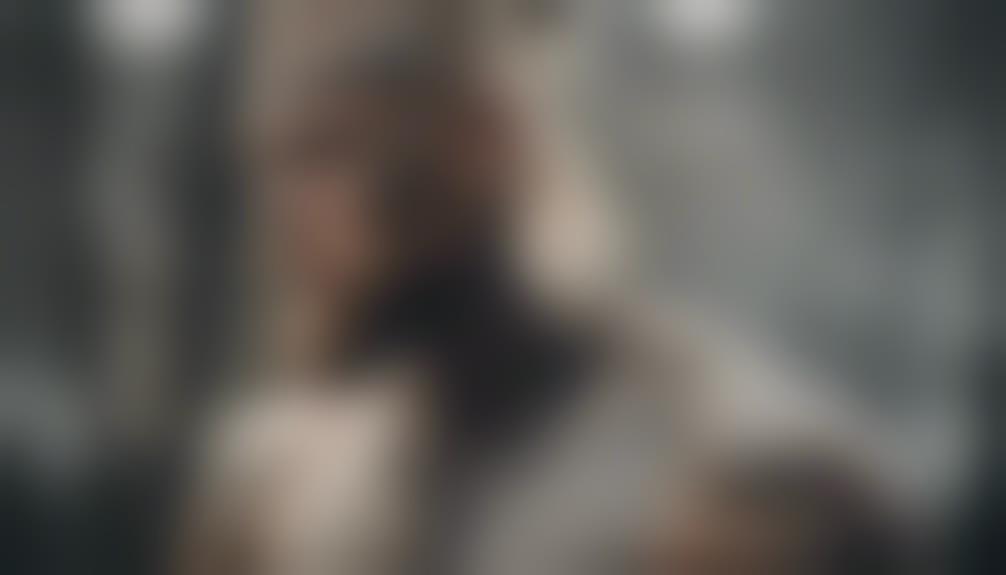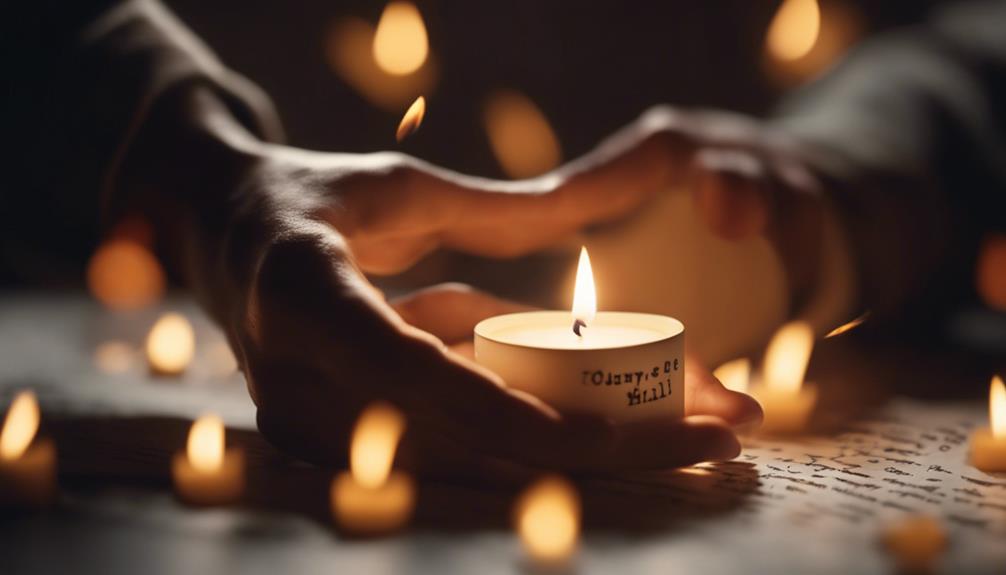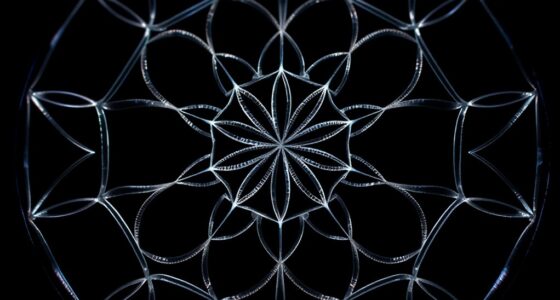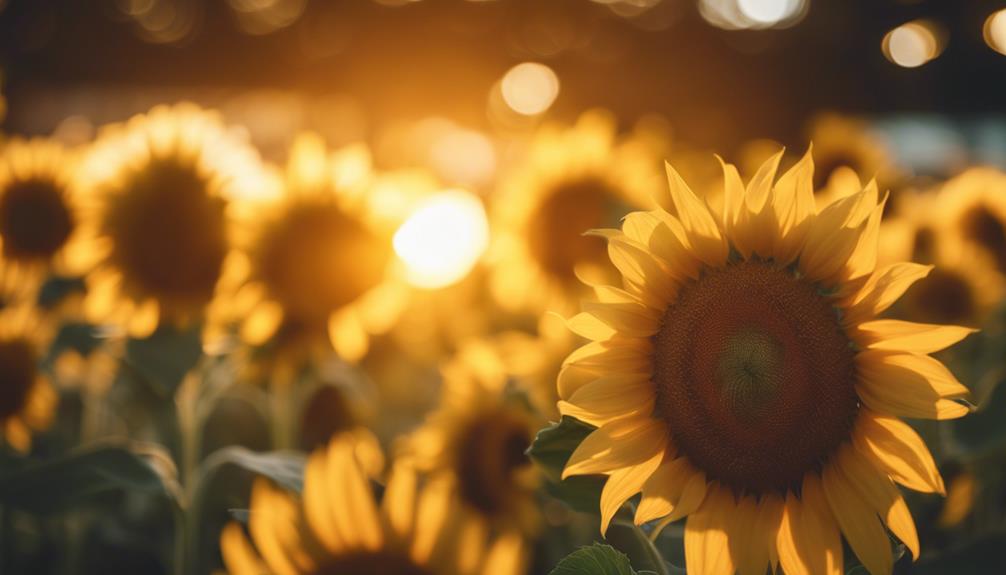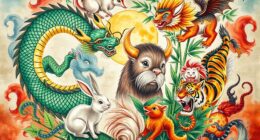Dive into the *fascinating world* of **Norse tattoos** and discover their *remarkable meanings*. The **Valknut** is a symbol of the ‘Cult of the Dead’ and the unity of life and death. Runes hold *special powers*, offering unique guidance in designs. Imagine the **Ouroboros** and **Jörmungandr**, symbols of eternal renewal and life’s cycles. Picture **Yggdrasil** and **Vegvísir**, ensuring safe journeys and showing our interconnected universe. Ravens and Valknuts stand for courage and wisdom. Odin guides warriors and stands as a symbol of strength. Unveil these mysteries and gain deeper insights into the rich tapestry of **Norse symbolism**.
Key Takeaways
- Valknut symbolizes honor, unity, and bravery in Norse culture.
- Runes hold unique power and cosmic significance in tattoo designs.
- Ouroboros and Jörmungandr represent life's cyclical nature and renewal.
- Yggdrasil and Vegvísir symbolize safe journeys and universe interconnectedness.
- Odin tattoos embody wisdom, resilience, and guidance from Norse mythology.
Symbolism of the Valknut
The Valknut symbolizes the 'Cult of the Dead' through its unique combination of Valr (slain warriors) and Knut (knot), embodying a profound recognition of courageous individuals who made sacrifices for their clan. In Norse mythology, this symbol holds deep cultural importance, representing honor and the prime of life sacrifices made by brave warriors.
The interconnectedness portrayed by the intricate design of the Valknut mirrors the belief in the unity between the living and the dead in Viking culture. This symbol goes beyond just death, signifying loyalty, bravery, and the eternal bond between the deceased and the living. Found in various Viking artifacts, the Valknut serves as a powerful reminder of the sacrifices and bravery of those who came before us, inspiring us to uphold similar values of courage and honor in our own lives.
Its presence in Viking art highlights the enduring legacy of those who chose to sacrifice for the greater good of their clans.
Mystical Meanings of Runes
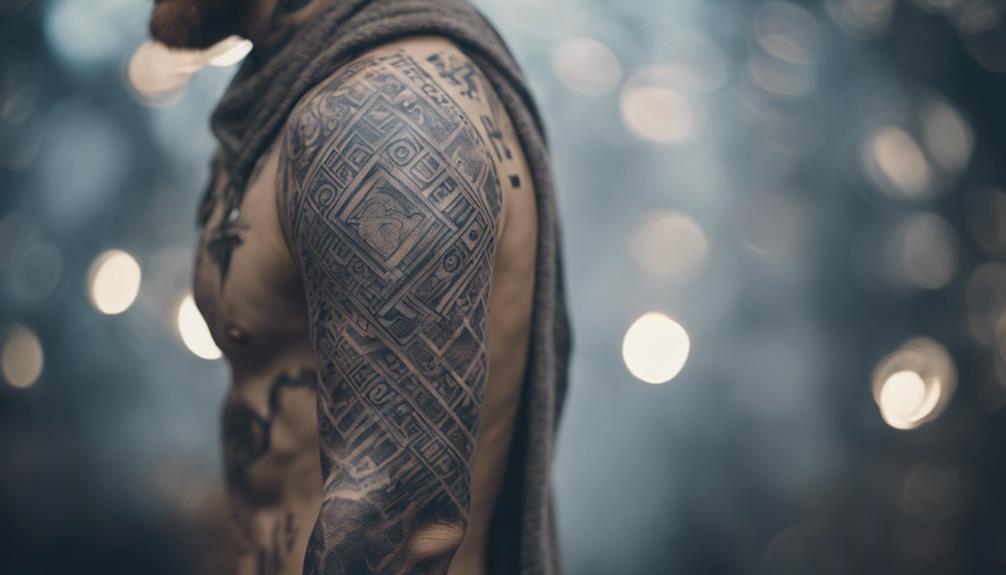
When exploring Norse tattoos, understanding the mystical meanings of runes becomes essential. Runes hold immense power and symbolism, with each symbol carrying unique attributes and significance.
Utilizing runes for guidance in tattoo designs can add depth and personal meaning to the artwork.
Rune Powers Unleashed
Exploring the mystical meanings of runes in Norse tattoos reveals a world of ancient symbolism and cosmic significance. Runes in Norse tattoos aren't just mere symbols; they carry potent powers and deep meanings derived from the essence of Viking culture.
Here are some intriguing insights about the rune powers harnessed:
- Each rune embodies specific qualities, values, and cosmic forces.
- Runes were utilized in communication, divination, and for magical purposes.
- Choosing the right combination of runes is vital for enhancing symbolism.
- Research is key to ensuring the accurate representation of the intended meanings in a tattoo design.
Symbolism in Runes
Revealing the mystical meanings of runes in Norse tattoos uncovers an ancient world of symbolism and cosmic significance. Runes, integral to Norse culture, hold mystical properties representing concepts like strength, protection, and guidance. These symbols were crucial in Viking society for communication, magic, and spiritual guidance.
By understanding the meanings of Runes, individuals can infuse personal significance into their tattoos, adding depth and individuality to the design. The incorporation of specific Runes not only enhances the aesthetic appeal but also conveys deeper messages and connections to ancient practices.
Each Rune carries a unique essence that resonates with the wearer, creating a powerful link to the past and infusing the tattoo with layers of historical and spiritual meaning.
Runes for Guidance
Delving into the mystical meanings of Runes for guidance in Norse tattoos reveals a rich tapestry of ancient wisdom and spiritual significance. When choosing runes for your tattoo, consider their meanings carefully. They can convey qualities like strength, victory, protection, or even love.
Research is essential to guarantee the accuracy and relevance of the chosen runes to your personal beliefs. Combining different runes in your tattoo can create powerful messages or intentions, enhancing the overall symbolism and magic imbued in the design.
In Norse mythology, runes hold a special place, representing communication with the divine and guiding principles for life. Incorporating these ancient symbols into your Norse tattoo can add depth and significance, connecting you to the rich heritage of Norse culture.
Ouroboros and Jörmungandr Significance
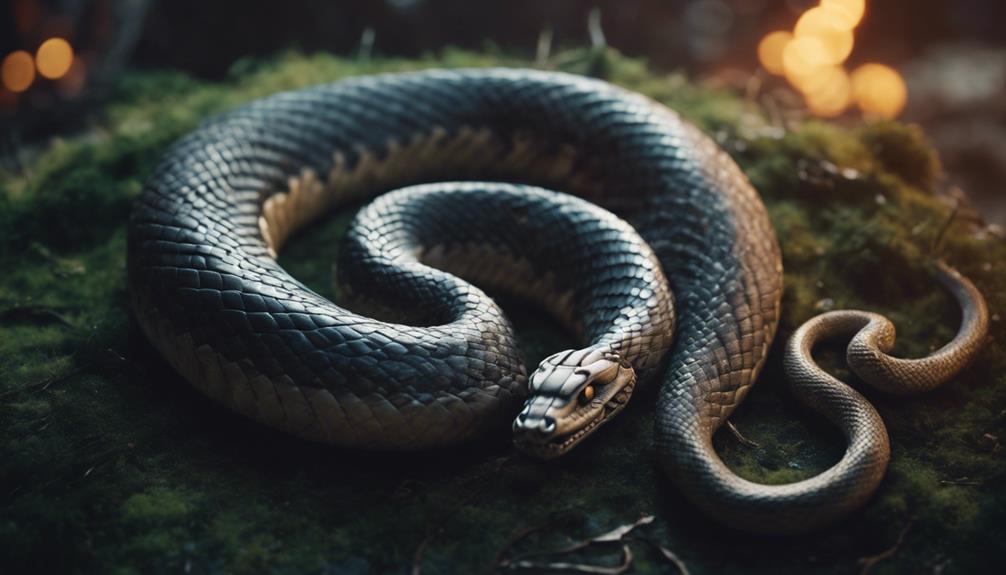
With their intertwined symbolism of eternal renewal and the interconnectedness of life and death, the Ouroboros and Jörmungandr hold profound significance in Norse mythology. The Ouroboros, depicted as a serpent consuming its own tail, represents the cyclical nature of life, while Jörmungandr, the serpent child of Loki, encircles the world symbolizing life's eternal cycle. Both symbols are not only present in Norse mythology but also in various cultures and religions as representations of eternal life and renewal. They embody the concepts of consumption and rebirth, emphasizing the interconnectedness of life and death. The Ouroboros and Jörmungandr convey deep symbolic meanings of continuous renewal and the eternal cycle of life in Norse mythology.
| Symbol | Representation | Significance |
|---|---|---|
| Ouroboros | Eternal renewal | Cyclical nature of life |
| Jörmungandr | Life's eternal cycle | Interconnectedness |
Yggdrasil and the Vegvísir Connection
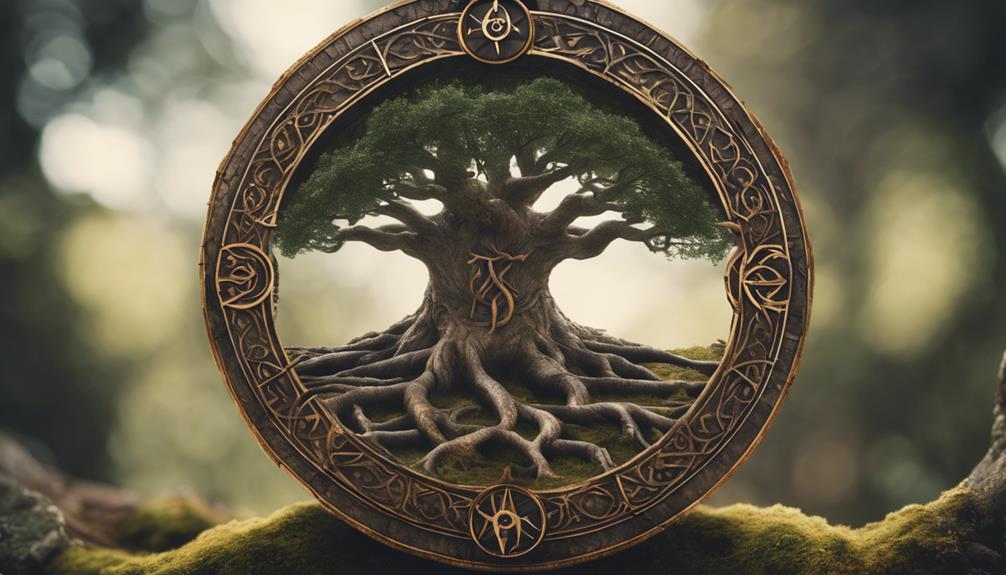
Yggdrasil, symbolizing the interconnectedness of the universe in Norse mythology, plays a crucial role in connecting the seen world with the underworld. This profound concept is mirrored in the Vegvísir, a guide symbol ensuring safe journeys and offering protection to travelers.
In Norse culture, getting a Vegvísir tattoo signifies a belief in reaching destinations securely under the watchful eye of spiritual guidance. Both Yggdrasil and the Vegvísir hold deep significance in Viking spiritual beliefs, showcasing the intricate connections between the physical and spiritual domains.
The intertwining symbolism of these two tattoos reflects the Vikings' reverence for the universe's mysteries and their quest for safe passage through life's journeys.
Raven Symbolism and Valknut Representation
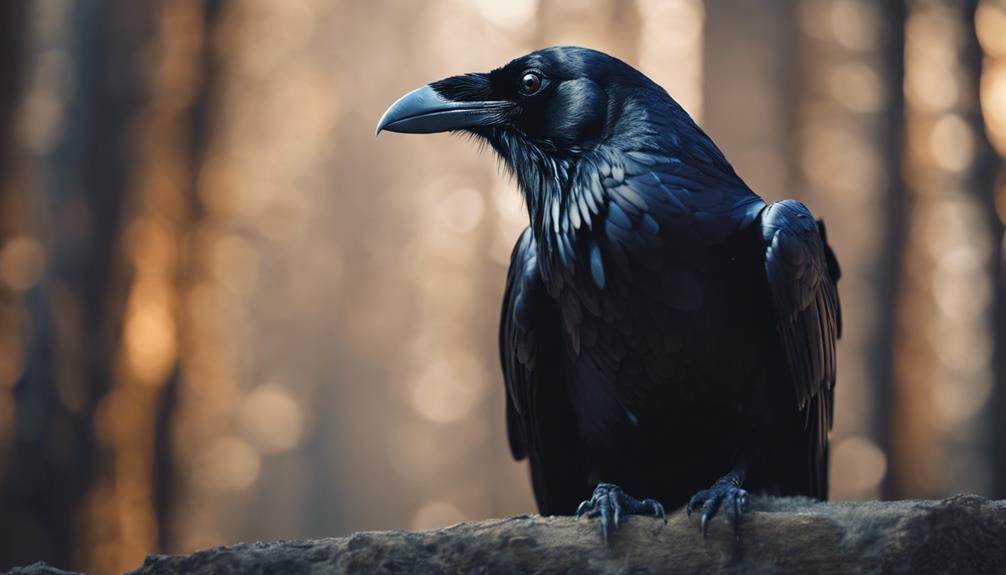
The symbolism of ravens and the representation of the Valknut in Norse tattoos reflect profound aspects of Viking mythology and beliefs. Ravens, closely linked to Odin in Norse mythology, are seen as wise messengers. In Viking culture, the Valknut, also known as the 'knot of the slain,' symbolizes the connection between the living and the dead, often found on burial sites to honor fallen warriors.
Combining both raven and Valknut symbols in Norse tattoos signifies Odin's role as the chooser of the slain, emphasizing the journey between life and death. These tattoos hold deep spiritual and symbolic meanings for those who embrace Norse mythology and Viking beliefs. The fusion of these powerful symbols on the skin serves as a reminder of the interconnectedness of life, death, wisdom, and honor in the Viking ethos, embodying the courage and respect cherished by this ancient culture.
Fenrir, the Helm of Awe, and Fearlessness
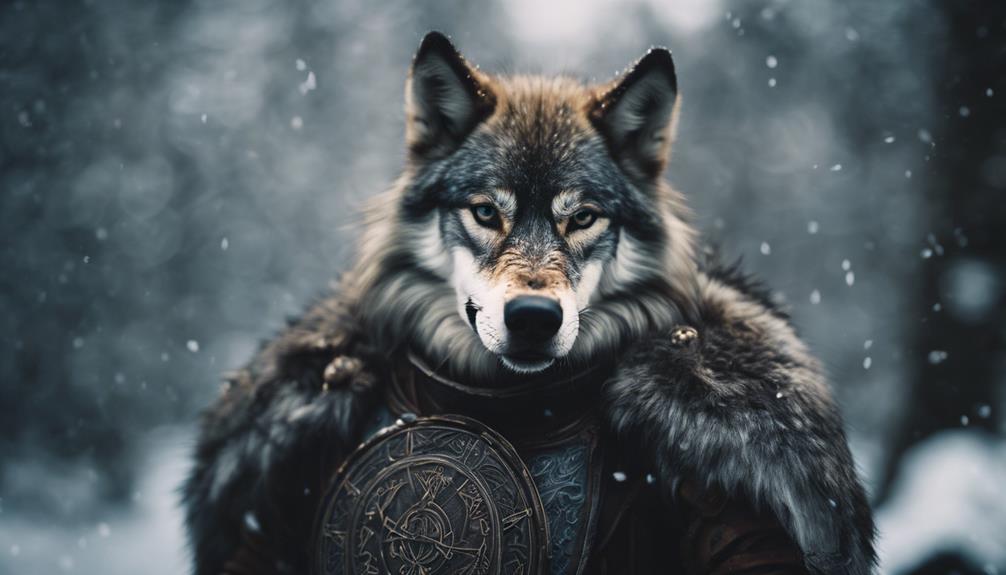
Fenrir, the formidable wolf of Norse lore, embodies notions of justice, power, and destiny. When considering Norse tattoos, incorporating Fenrir and the Helm of Awe can convey powerful messages of courage, strength, and readiness to face challenges. The Helm of Awe, also known as Ægishjálmur, is a mysterious symbol that offers protection against hostile forces, instilling fearlessness in those who bear it. Fenrir, not merely seen as evil but as part of the natural order in the cycle of life, represents the ever-changing world we inhabit.
- Fenrir symbolizes justice, power, and destiny.
- The Helm of Awe provides defense against hostile forces.
- Combining Fenrir and the Helm of Awe in a tattoo signifies courage and strength.
- Embracing the cycle of life, these symbols represent fearlessness in the face of challenges.
Odin: Wisdom and Power
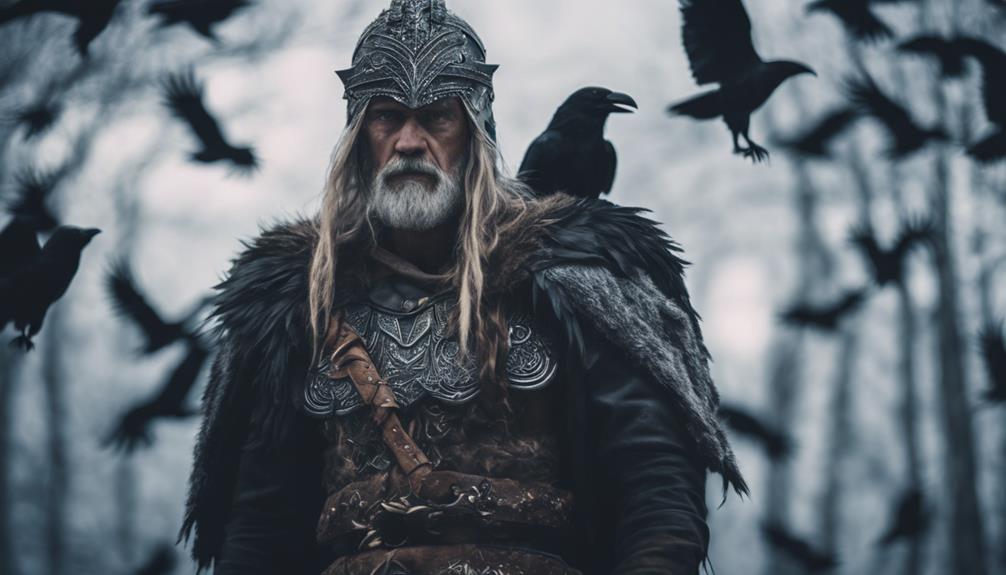
Odin, the chief god in Norse mythology, embodies wisdom and power, representing profound knowledge and strength in the face of adversity. As the Allfather, Odin's sacrificed eye at the Well of Urd granted him unparalleled wisdom, making him a symbol of intellectual prowess and strategic thinking.
The Valknut, a symbol often associated with Odin, signifies the chosen warriors who'll join him in Valhalla, showcasing his role as a guide and protector of the brave. Additionally, Odin wields Gungnir, a powerful spear, and is accompanied by his ravens, Huginn and Muninn, who bring him information from all domains.
Tattoos of Odin serve as a connection to Norse mythology, embodying the qualities of wisdom, knowledge, and resilience in the face of challenges. Individuals who choose to ink themselves with symbols of Odin seek to channel his strength and guidance in their own lives, embracing the enduring legacy of this legendary deity.
Frequently Asked Questions
What Do Norse Tattoos Mean?
Norse tattoos carry deep meanings rooted in Nordic mythology. Each symbol, from the Valknut to the Helm of Awe, represents traits like strength and protection.
Runes, like cosmic messengers, convey personal attributes. Mythological symbols such as the Ouroboros Jörmungandr symbolize life cycles.
Vegvísir guides safe journeys between dimensions. Norse tattoos weave a rich tapestry of ancient wisdom and power, embodying the essence of Norse mythology in intricate designs.
Is It OK to Get a Norse Tattoo?
Yes, it's important to get a Norse tattoo as long as it's done with respect and understanding of its cultural significance. Many individuals choose Norse tattoos to honor their ancestry and beliefs.
It's essential to grasp the symbolism and history behind these tattoos before getting one. Norse tattoos can be a powerful way to express personal identity and connect with ancient Norse culture, making them a meaningful choice for many people.
What Viking Tattoos to Avoid?
When thinking about Viking tattoos, it's important to steer clear of inaccurate symbols, misrepresentations of Norse culture, generic designs lacking meaning, and offensive imagery. Research thoroughly to understand the significance behind each symbol.
Avoid cultural appropriation and disrespect towards Norse heritage. By being mindful of these factors, we can make sure our tattoos are respectful and meaningful representations of Norse culture.
What Is the Norse Magical Symbol?
The Norse magical symbol commonly known as the Helm of Awe or Ægishjálmur is a powerful protective symbol in Viking culture. It inspires fear and shields the wearer from dangers and negative energies.
This symbol, associated with the god Odin, symbolizes strength and protection. Wearing the Helm of Awe was believed to grant invincibility and confidence in battle. Its eight arms radiating from a central point represent courage and defense in Norse mythology.
What Are Some Similarities Between Norse Tattoos and Tribe Tattoos in Terms of Meaning?
Norse tattoos and tribe tattoos share deep tribal tattoo meanings. Both embody rich cultural significance and often represent themes such as strength, bravery, and heritage. These tattoos serve as powerful symbols of identity and tradition for those who wear them, connecting them to their roots and ancestors.
Conclusion
To sum up, Norse tattoos hold deep meanings and symbolism that reflect the rich history and mythology of the Viking culture. Each symbol carries its own significance, from protection and wisdom to strength and fearlessness.
By understanding the stories and beliefs behind these tattoos, we can appreciate the intricate designs and powerful messages they convey.
So next time you see someone with a Norse tattoo, remember that it may hold a world of meaning beyond just its aesthetic appeal.

